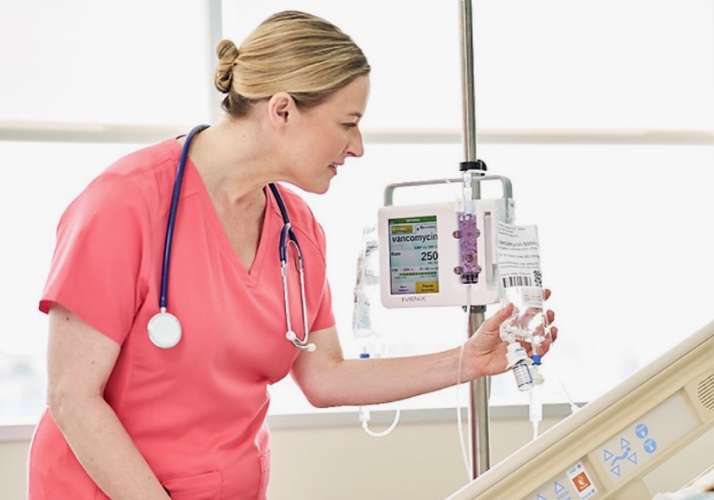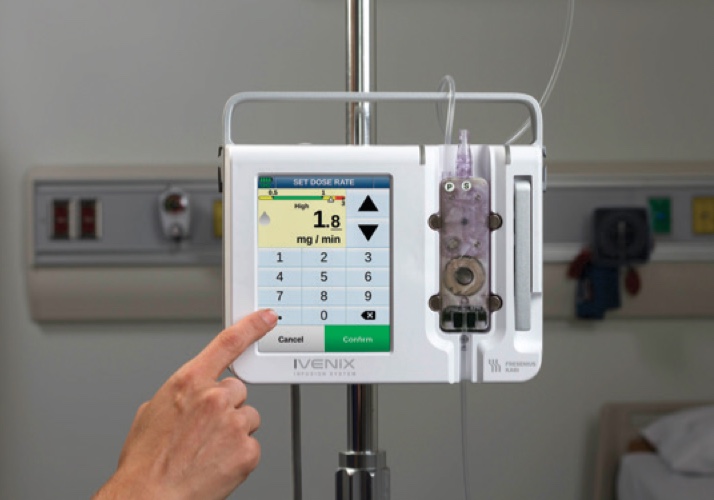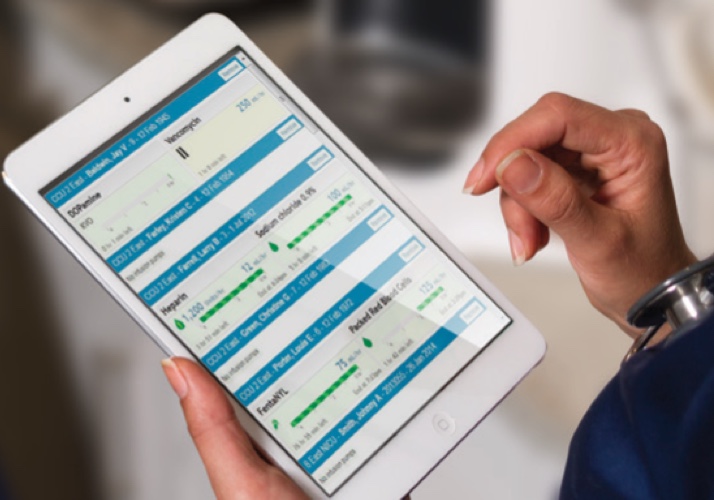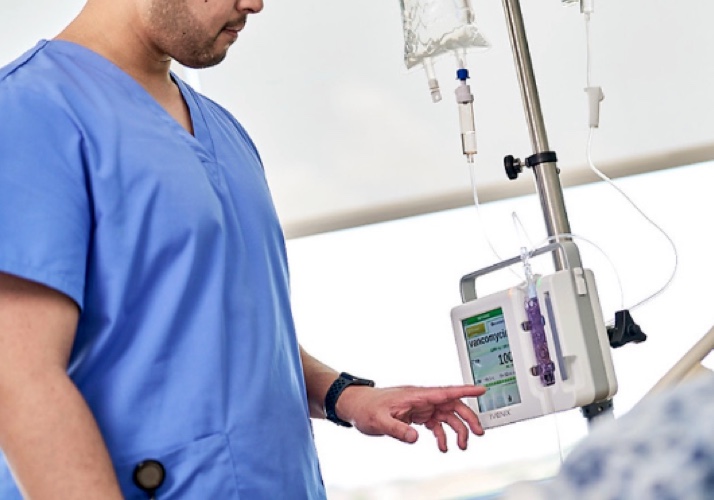




*Overall accuracy +/- 5% under the following conditions: 0.5-1000 mL/hr; 5°C to 35°C ambient temperature; 10 PSIA-15.5 PSIA ambient pressure; -100 mmHg to 525 mmHg backpressure; +/- 24” inlet head height; viscosities up to 70% dextrose solution; up to 96-hour duration; microbore and macrobore sets.
†Back priming into a rigid bottle is not recommended. Single-inlet cassettes that do not support secondary delivery or back priming are available.
Please see the full list of warnings and cautions associated with this device.
Ivenix Infusion System Large Volume Pump (LVP) Instructions for Use. Bad Homburg, Germany: Fresenius Kabi; 2023.
Fresenius Kabi USA, LLC
Three Corporate Drive
Lake Zurich, IL 60047
©2024 Fresenius Kabi USA, LLC. All Rights Reserved.
Fresenius Kabi USA, LLC
Three Corporate Drive
Lake Zurich, IL 60047
©2024 Fresenius Kabi USA, LLC. All Rights Reserved.